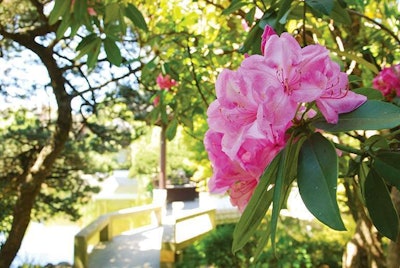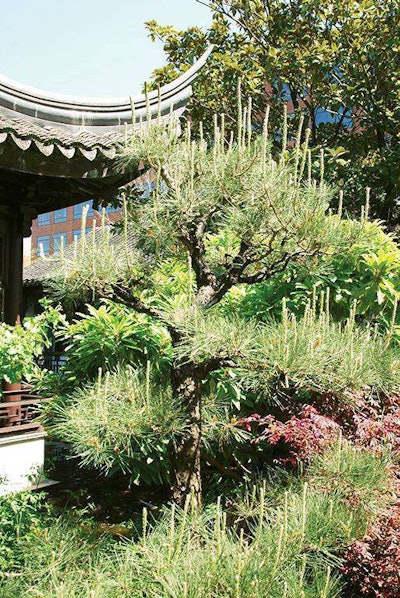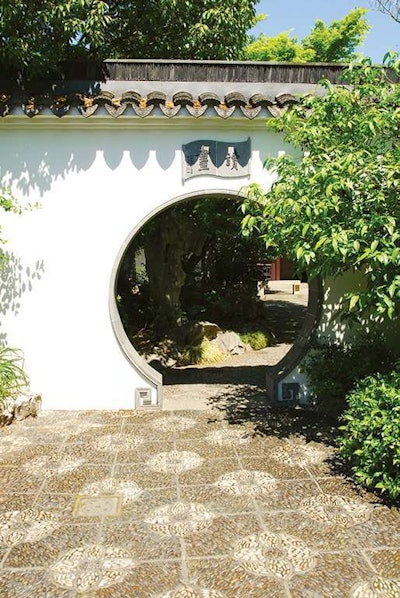
Chinese garden brings harmony, culturally symbolic plants to Portland
Pass the chained bicycles, rose-adorned street signs, people who “Keep Portland Weird” and a pair of lions guarding the Chinatown gate lie traces of an ancient world.
Once inside the walls of the Lan Su Chinese Garden, visitors are asked to turn off their cell phones and have the option of removing their shoes for a more natural experience. Only the occasional screeching tires remind visitors of the busy world outside the compound.
The moss and pebble mosaic walkway winds through moon gate door openings, across a pond of koi fish and into Ming Dynasty-inspired structures, which range from a teahouse to art exhibit.

But the foliage also serves another purpose. In Chinese gardens, plants convey meanings: For example, plum, bamboo and pine are known as the “Three Friends of the Winter,” serving as a reminder to preserve.
Lan Su also incorporates the five elements of a Chinese garden – rocks, water, literature, plants and architecture – along with couplets like, “Read the painting; listen to the fragrance,” intricately carved on gingko panels. Amongst the foliage sit Lake Tai rocks, which are top heavy to represent mind over matter.
“It’s meant to make you think,” says Lucinda Pierpont, who has been a tour guide there since the garden opened. As she leads groups through the meditative space, she shares traditional Chinese stories and jokes that relate to the surroundings.
“The small, confined spaces open up to endless sky, which gives you the yin and yang,” Pierpont says of how the seemingly opposite elements bring harmony and balance.

Sixty-five artisans from Suzhou lived in Portland while they assembled and completed the structures. During the six months of construction, they used more than 500 tons of rock from Mainland China, wood and tile to build the structures, and 60 percent of the plants in the garden originated in China. The buildings incorporate lattice windows that distort the garden and make it appear like several areas.
Throughout the garden, crewmembers use ladders to hand trim branches, while others skim the water for leaves and other debris. Under a tree, students read while soaking in the quietness of nature that can be so difficult to find in a busy city.
In addition to daily tours, the garden can be booked for nighttime events such as concerts and weddings. And visitors can leave with more than a balanced mind and spirit – they can also purchase featured plants.
So for those looking to get in touch with nature and escape to an ancient world, Lan Su Chinese Garden provides that and much more.
“Most cherished in this mundane world is a place without traffic; truly in the midst of a city there can be mountain and forest,” Wen Zhengming (1470-1559), Ming Dynasty painter, calligrapher and scholar.











